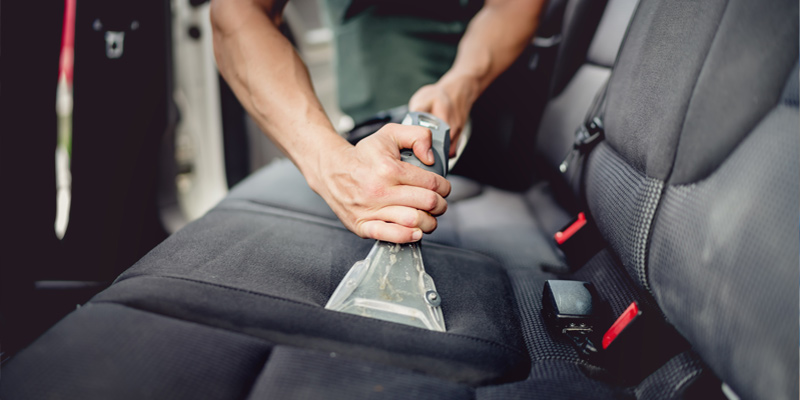Do-It-Yourself Auto Detailing: Methods to Get Professional Results at Your Home
There is the sensation of taking a car out for a spin that looks and feels fresh. Regardless of whether you’re a car lover or just someone who wishes to keep their vehicle in top condition, car detailing is an important process that considerably boosts your car's appearance and longevity. In this overview, we will delve into the craft of self auto detailing, empowering you to obtain top-notch results from the ease of your home.
Numerous people might believe that regular auto detailing is just a fancy service reserved for affluent individuals, but the fact is that it has a critical role in maintaining your vehicle's worth and look. From safeguarding the exterior to keeping the inside clean and healthy, the advantages of proper detailing significantly exceed the effort needed. So, how often should you detail your car? How do interior and exterior detailing differ? In the following sections, we will address these questions and more, helping you convert your car care routine into an pleasurable and effective practice. Whether you’re tackling persistent blemishes or choosing between wax and ceramic coating, we’ve got you taken care of professional advice and guidance.
Understanding Auto Detailing
Car detailing is a thorough cleaning, refurbishment, and polishing of a car, which covers both the interior and exterior. While a typical car wash may handle surface dirt, detailing dives much deeper into enhancing the vehicle's condition. It consists of different cleaning techniques, specialized products, and often, commercial-grade equipment to achieve that pristine finish. This process can bring back a car's original beauty, making it look and seem as good as new.
Regular vehicle detailing is vital not just for appearance but also for maintaining the value and lifespan of a vehicle. It involves a variety of tasks such as washing, waxing, buffing, and cleaning various interior surfaces. Seasoned auto detailers often carry out services like paint correction and care for upholstery materials to guarantee every inch of the vehicle is looked after. This not only enhances appearance but also safeguards against elements that can lead to decline over time.
Knowing the distinctions between interior and exterior detailing is key for car drivers. Inside protection films focuses on sanitizing and disinfecting surfaces like seats, carpets, dashboards, and other compartments, while outside detailing emphasizes cleaning, polishing, and protecting the car's body. Both aspects are important for thorough care, and with the right understanding and tools, individuals can attain a professional-grade result at your place.
Essential Techniques for a High-Quality Finish
Securing a high-quality finish in car detailing demands the correct methods and focus to finishing touches. Begin with a comprehensive washing procedure to clear dirt and grime from the outside. Utilize a dual-bucket system—one for lathered water and another for rinsing your application mitt. Always remember to rinse the mitt before dipping it back into the soapy water to avoid bringing contaminants onto the paint. This approach minimizes the risk of scratches and swirl marks, ensuring a flawless surface suitable for more detailed work.
As soon as your car is washed, focus on correction and protection. For paint correction, utilize a dual-action polisher with the right pads and compounds to eliminate imperfections. Operate in manageable sections and apply consistent pressure for even results. Once attaining the intended level of shine, it’s time to put on a protective layer, deciding between wax or ceramic coating based on your car's needs. Wax offers a warm glow and is more convenient to apply, while ceramic coating provides longer-lasting protection against natural factors.
In conclusion, pay focus to the interior to achieve a comprehensive finish. Employ a vacuum with proper attachments to reach under the seats and in crevices. Afterwards, use specific cleaners for multiple surfaces, such as leather, vinyl, and cloth. Pay extra attention to the dashboard and console, as these areas can collect dust quickly. A finishing touch with an interior protectant can add shine and help maintain your vehicle’s interior for a healthier ride. By perfecting these techniques, you can upgrade your DIY detailing efforts to a high-quality level.
Maintaining The Vehicle Between Detailing Sessions
To ensure a vehicle appearing great between expert details, regular maintenance is crucial. Commence by washing your car every few weeks to clear away dirt, grime, and contaminants that can damage the paint. Use a gentle car wash soap and a microfiber wash mitt to avoid scratches. It is also essential to rinse thoroughly to make sure no soap residue remains, which can weaken the finish. Steer clear of washing the car in direct sunlight, as this can lead to water spots.
Additionally, protecting a vehicle's surfaces should be a top concern. Using a coat of wax every three months can provide a barrier against the elements and enhance shine. If you prefer a longer-lasting solution, think about a ceramic coating that offers superior protection against UV rays, dirt, and water stains. During a maintenance routine, inspect and maintain the tires and windows as well. Clean the glass with a specific cleaner to guarantee clarity and check tire pressure periodically to support even wear and extend tread life.
Lastly, be sure to pay attention to a car's interior. Consistently vacuuming and wiping down surfaces will help stop dirt buildup and sustain a fresh environment. Use suitable cleaners for different materials, like leather or fabric, to maintain they are in good condition. Odors can be addressed by using air fresheners or odor absorbers, which keep your car smelling pleasant. By applying these simple maintenance tips, you can guarantee your car remains in top shape and looks great during detailing appointments.
